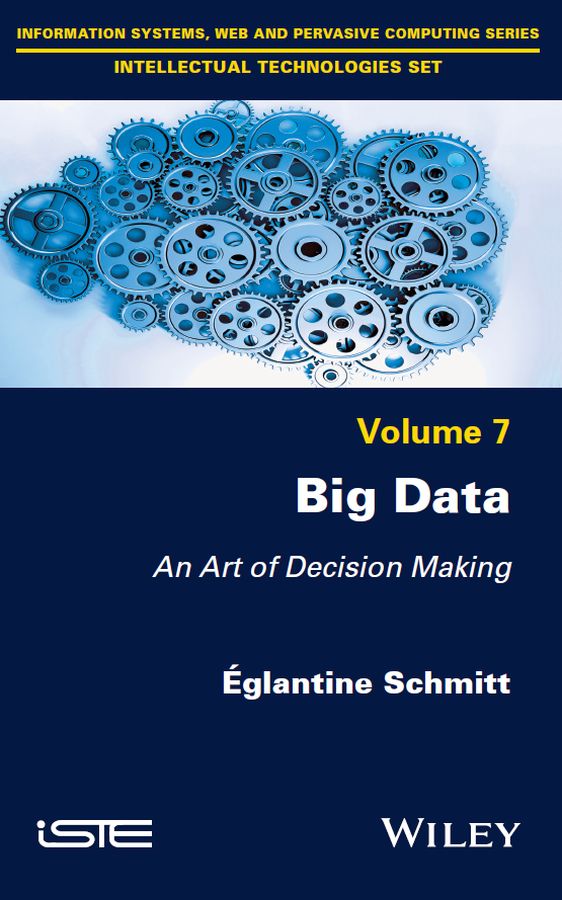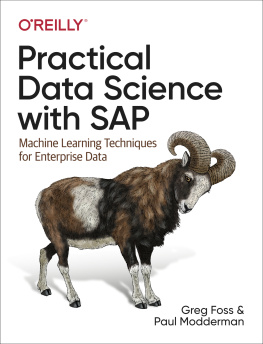
Table of Contents
List of Tables
- Chapter 2
- Chapter 6
List of Illustrations
- Chapter 2
- Chapter 3
- Chapter 4
- Chapter 5
- Chapter 6
Guide
Pages
Intellectual Technologies Set
coordinated by
Jean-Max Noyer and Maryse Carms
Volume 7
Big Data
An Art of Decision Making
glantine Schmitt

First published 2020 in Great Britain and the United States by ISTE Ltd and John Wiley & Sons, Inc.
Apart from any fair dealing for the purposes of research or private study, or criticism or review, as permitted under the Copyright, Designs and Patents Act 1988, this publication may only be reproduced, stored or transmitted, in any form or by any means, with the prior permission in writing of the publishers, or in the case of reprographic reproduction in accordance with the terms and licenses issued by the CLA. Enquiries concerning reproduction outside these terms should be sent to the publishers at the undermentioned address:
ISTE Ltd
27-37 St Georges Road
London SW19 4EU
UK
www.iste.co.uk
John Wiley & Sons, Inc.
111 River Street
Hoboken, NJ 07030
USA
www.wiley.com
ISTE Ltd 2020
The rights of glantine Schmitt to be identified as the author of this work have been asserted by her in accordance with the Copyright, Designs and Patents Act 1988.
Library of Congress Control Number: 2020935005
British Library Cataloguing-in-Publication Data
A CIP record for this book is available from the British Library
ISBN 978-1-78630-555-8
Introduction
Our philosophical literature is full of intricate accounts of causal theories of perception, yet they have curiously little do with real life. We have fantastical descriptions of aberrant causal chains which, Gettier-style, call in question this or that conceptual analysis. But the modem microscopist has far more amazing tricks than the most imaginative of armchair students of perception. What we require in philosophy is better awareness of the truths that are stranger than fictions. We ought to have some understanding of those astounding physical systems by whose augmenting power we now see more/than all the world has ever done before.
Ian Hacking, Est-ce quon voit travers un microscope? ()
Every innovation in knowledge technologies disrupts our relationship with reality, increasing our perception, memory and reasoning abilities. Scientific measuring instruments dedicated to observation reveal new aspects of reality, while tools dedicated to manipulation give us the ability to intervene in what is no longer immaculate nature, but a system made up of what we have found and what we have brought to it. The telescope has given us access to what is at a distance, the microscope to infinitely small particles and the X-ray has given access to the inner side of the material. Closer to home, the advent of digital technology has reinvented the way we record and share our knowledge. It is a new material for action and knowledge, as well as a new tool for manipulating and constituting this knowledge. The multiplication of the traces that we leave of ourselves on these digital materials now gives us a new access to our own culture.
Each innovation in knowledge technologies calls for a new epistemology, a new reasoned look at the objects we wish to learn about. While already relying on knowledge, these technologies augment our knowledge-producing thinking and our capacity for memory, learning and manipulation. Technology not only equips the scientific mind, but also pushes it beyond its limits, toward new theories of reality and new methods to apprehend it. These new approaches, hesitant and shaky, nevertheless build bridges between what we can see and manipulate, and our need for rationality. As Popper (1985) wrote: Reason works by trial and error. We invent our myths and theories and we try them out: we try to see how far they take us.
As such, the new approaches brought about by innovations in knowledge technologies are inevitably unsatisfactory, both in the light of our usual standards and because of their nascent character. They are always incomplete, insufficient and unacceptable. They will be criticized, amended, revisited and taken up at the root. Nevertheless, without the imperfection of these pioneering trials, there is nothing more to perfect than the deconstruction of what could have been done.
The multiplication of the traces we leave of ourselves on digital media is no exception to these observations. More or less indiscriminately referred to as big data, data sciences, algorithms or artificial intelligence, the reasoned and technically instrumented study of these traces emerges with its procession of myths and theories, as Popper says, that we formulate along the way. Similar to the dawn of Platos logos, the boundary between myth and science is still fragile, and it takes a sharp eye to distinguish between them. The myth tells a story that is more pleasant and easier to understand than the story of trial and error, full of technicalities, of the first achievements, thus spreading faster and further. The experimenter navigates by sight, as much from what they know as from what they would like to know, intertwining the two. They are the hero of the myth that is told to them, and that they tell themselves in order to find their way around. Although they draw inspiration from it, there is, as we shall see, nothing in the study of digital footprints that satisfies the criteria of contemporary sciences, whatever they may be, while having a fundamentally similar mode of emergence.
To understand what is at stake with the multiplication of digital footprints, we need to listen to the pleasant myth as well as to the technicalities, and take them both seriously. To account for these new knowledge technologies, we need to mobilize a benevolent philosophy of science, attentive to detail. We must opt for an attitude that is simultaneously descriptive and normative, because to describe things for the first time is to name them, that is to say, to lay down the terms in which they can be apprehended. Carrying out big data epistemology means building the theoretical apparatus and the conceptual position required to understand and study these large masses of data. It is about formulating an initial methodological paradigm, general enough to apply to any study project of this type, and specific enough to already guide the necessary adjustments to the actual situation of a project.
This simultaneously descriptive almost historicizing and normative approach in the sense that its contribution is a method-prescribing paradigm allows us to escape from another, less fruitful normativity: that of deconstruction. As we shall see, to brand a phenomenon a social construction is to lock it up and condemn it, as if it had nothing more to say beyond its status as a cultural artifact. To reduce it to a sociologizing object, a matter of power games between actors, is to boil it down to a pure exteriority. To avoid this pitfall, we choose to adopt a philosophical approach that integrates the objects internal and external properties, revealing the complexity of the belief system it constitutes, rather than bringing it back within the boundaries of a simple object, simple and straightforward, which only supports one aspect of analysis.
This stance mobilizes a certain conception of the philosophy of science. A certain conception of philosophy, first of all, conscious of the criticisms addressed to it and of its predilection for intricate accounts of causal theories [with] curiously little to do with real life, according to the formulation of Ian Hacking, himself a philosopher, and quoted above in this introduction. The philosophy that we practice is constantly nourished by reality, through what the human and social sciences have to say about it, and by first-hand experience as to its purpose, which, as we shall see, benefits the author of these lines. It is a philosophy that wants to be defined by the object it gives itself and the developments it imposes on it, more than by a particular philosophical tradition, a specific school of thought. We will be obsessed with what has actually happened, with what is observable, with the material, practical and empirical conditions of the emergence of our object. We situate ourselves between science and technology as articulated by science and technology studies (STS). It will be as much a philosophy of science as it is a philosophy of technology, adopting a conceptual approach without being analytical, as well as a historicizing approach without being a history of science.
Next page











